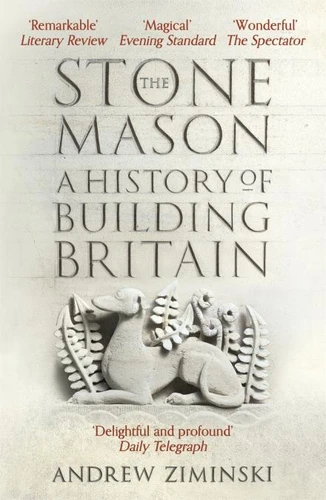The Stonemason. A History of Building Britain
Par :Formats :
Disponible dans votre compte client Decitre ou Furet du Nord dès validation de votre commande. Le format ePub protégé est :
- Compatible avec une lecture sur My Vivlio (smartphone, tablette, ordinateur)
- Compatible avec une lecture sur liseuses Vivlio
- Pour les liseuses autres que Vivlio, vous devez utiliser le logiciel Adobe Digital Edition. Non compatible avec la lecture sur les liseuses Kindle, Remarkable et Sony
- Non compatible avec un achat hors France métropolitaine
 , qui est-ce ?
, qui est-ce ?Notre partenaire de plateforme de lecture numérique où vous retrouverez l'ensemble de vos ebooks gratuitement
Pour en savoir plus sur nos ebooks, consultez notre aide en ligne ici
- Nombre de pages336
- FormatePub
- ISBN978-1-4736-6395-4
- EAN9781473663954
- Date de parution04/03/2020
- Protection num.Adobe DRM
- Infos supplémentairesepub
- ÉditeurJohn Murray
Résumé
A stonemason's story of the building of Britain: part archaeological history, part deeply personal insight into an ancient craft. In his thirty-year career, stonemason Andrew Ziminski has worked on many of our greatest monuments. From Neolithic monoliths to Roman baths and temples, from the tower of Salisbury Cathedral to the engine houses, mills and aqueducts of the Industrial Revolution and beyond, The Stonemason is his very personal history of how Britain was built - from the inside out.
Stone by different stone, culture by different culture, Andrew Ziminski (with his faithful whippet in tow) takes us on an unforgettable journey by river, road and sea through our countryside showing how the making of Britain's buildings offers an unexpected and new version of our island story.'My school history lessons were focused around flat pages of facts, events and royal personalities, but for me it was the material aspects of the past, the tangible remnants left behind that were thrilling, and that it was these buildings and places, and learning how they worked, that really brought the past alive.'
Stone by different stone, culture by different culture, Andrew Ziminski (with his faithful whippet in tow) takes us on an unforgettable journey by river, road and sea through our countryside showing how the making of Britain's buildings offers an unexpected and new version of our island story.'My school history lessons were focused around flat pages of facts, events and royal personalities, but for me it was the material aspects of the past, the tangible remnants left behind that were thrilling, and that it was these buildings and places, and learning how they worked, that really brought the past alive.'
A stonemason's story of the building of Britain: part archaeological history, part deeply personal insight into an ancient craft. In his thirty-year career, stonemason Andrew Ziminski has worked on many of our greatest monuments. From Neolithic monoliths to Roman baths and temples, from the tower of Salisbury Cathedral to the engine houses, mills and aqueducts of the Industrial Revolution and beyond, The Stonemason is his very personal history of how Britain was built - from the inside out.
Stone by different stone, culture by different culture, Andrew Ziminski (with his faithful whippet in tow) takes us on an unforgettable journey by river, road and sea through our countryside showing how the making of Britain's buildings offers an unexpected and new version of our island story.'My school history lessons were focused around flat pages of facts, events and royal personalities, but for me it was the material aspects of the past, the tangible remnants left behind that were thrilling, and that it was these buildings and places, and learning how they worked, that really brought the past alive.'
Stone by different stone, culture by different culture, Andrew Ziminski (with his faithful whippet in tow) takes us on an unforgettable journey by river, road and sea through our countryside showing how the making of Britain's buildings offers an unexpected and new version of our island story.'My school history lessons were focused around flat pages of facts, events and royal personalities, but for me it was the material aspects of the past, the tangible remnants left behind that were thrilling, and that it was these buildings and places, and learning how they worked, that really brought the past alive.'



